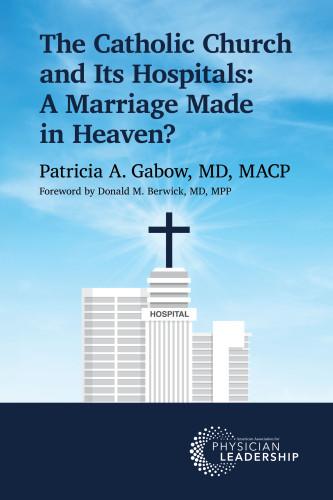Summary:
True leadership and compassion involve selfless dedication, resilience, and unwavering commitment to serving others, especially those who are marginalized and suffering. Mother Marianne Cope's life exemplifies the power of faith, tenacity, and sacrificial caring in making a profound impact on the world.
Leaders of the women religious orders, typically referred to as “Mother” or “Mother Superior,” often were the ones who opened or managed hospitals in the early days of American healthcare — they were the CEOs. They are an inspiration — especially for women leaders and those who still see healthcare as a calling and not a business.
Although one could tell many hundreds of inspiring stories about these women leaders, I chose five exemplary Mothers who were inspiring and remarkably different from each other. Nuns were not cookie-cutter personas. Their varying skills and approaches paint the rich picture of the foundations of Catholic healthcare.
Yet, as different as they were, they all embodied zeal, resilience, tenacity, faith, hope, sacrificial caring, and compassion. They stand as role models and mirrors of self-reflection for current leaders of Catholic healthcare and, in fact, for all healthcare leaders.
Mother Marianne Cope
Mother Marianne Cope’s story told here is taken from A Song of Pilgrimage and Exile, unless otherwise indicated.(1) She was born Barbara Koop to a Catholic family in Germany in 1838. In 1840, her parents emigrated to Utica, New York, where she grew up in a large family of very modest means. In 1862, she entered religious life into the Third Order of St. Francis at their convent in Syracuse, New York (Figure 3.1). She rose through the leadership of the Order and in 1870 found herself as the leader of the newly opened St. Joseph’s Hospital in Syracuse. In 1877, she was elected the leader of her religious community.

Figure 3.1. Mother Marianne Cope, a nun of Sisters of the Third Order of Saint Francis, who worked, lived, and died for the lepers in Hawaii.
Image Wikipedia: Public Domain
While these roles were challenging, they did not compare to the stark realities that awaited her. A June 1883 letter from a missionary priest begged her to bring sisters to Hawaii to care for the sick. This letter changed her life. Her response to the letter was,
“Shall I regard your kind invitation to join you in your missionary labors, as coming from God.…I feel an irresistible force drawing me to follow this call….”(1)
At the time, 50 orders of religious were asked to come to Hawaii for this work and only Mother Marianne and her community responded.(2)
In November, she came face to face with the reality of this call when she entered the Branch Hospital in Kakaako, Hawaii, which housed the lepers:
“…permeating everything — air, clothes, straw pallets, greasy blankets, even the wood of the walls and the dirt on the floors — hung the stink of lepers: the revolting stench rising from the sores, unwashed and uncovered, the miasma of dead and rotting flesh…. Mother Marianne saw, smelled, heard, felt all those horrors….”(1)
But unlike what almost all of us would do, she and the other sisters who came with her did not turn away, never to return. Perhaps she had cemented in her mind a picture of Jesus touching and healing the lepers, or she recalled St. Francis, who got down from his horse and embraced and kissed the leper as a brother despite his initial revulsion.
The six nuns began scrubbing away years of dirt on everything from the pots in the kitchen to the walls of the cottages. Then they cleaned the lepers’ wounds. The commitment this required is underscored by the fact that some sisters from her order who came later did not stay.
The situation Mother Marianne found at the Branch Hospital clearly showed that the current leadership was inadequate. When she asked for clarification of her authority, she was told that the nun’s work was “women’s work,” and women’s work did not include leadership — or so some thought. Months later, she called a meeting with the three men who were obstructing her mission to care for the lepers: the steward of the hospital, a political leader, and the bishop. “Behind the serene countenance…hid a will of tempered steel….”(1) She informed them she and her sisters would not stay if her conditions were not met. The outcome is easily deduced.
She had promised her sisters that none would contract leprosy and neither she nor they did.(2)
Mother Marianne cared for the lepers for 35 years, from 1883 to her death in 1918, first at Branch Hospital and then in the leper colony at Molokai.(1) In recognition of this astounding commitment, she has been called the “beloved mother of the outcasts.”(2)
She was canonized a saint of the Catholic Church in 2012 by Pope Benedict XVI. At the canonization, the pope said, “At a time when little could be done for those suffering from this terrible disease, Marianne Cope showed the highest love, courage, and enthusiasm. She is a shining and energetic example of the best of the tradition of Catholic nursing sisters and of the spirit of her beloved Saint Francis.”(2)
Excerpted from The Catholic Church and Its Hospitals: A Marriage Made in Heaven? by Patricia A. Gabow, MD.
References
Hanley ML, Bushnell OA. A Song of Pilgrimage and Exile: The Life and Spirit of Mother Marianne of Molokai. Chicago, IL: Franciscan Herald Press, 1980.
St. Marianne Cope. Catholic News Agency. https://www.catholicnewsagency.com/saint/st-marianne-cope-727.
Topics
Environmental Influences
Influence
Healthcare Process
Related
Glycemic Control in Hospitalized Patients With Diabetes Mellitus: Case Series and Literature Review to Reduce Inpatient Hyperglycemia With or Without Diabetic KetoacidosisMedical Malpractice Lawsuits: How Not to Change the Law but Level the Playing Field Life’s Lessons From the Baseball DiamondRecommended Reading
Strategy and Innovation
Life’s Lessons From the Baseball Diamond
Strategy and Innovation
The Power of Metaphors When Introducing Change Initiatives
Professional Capabilities
Championing Physician Leadership Development: AAPL's Five-Decade Commitment Meets Healthcare's Critical Moment
Professional Capabilities
“Profiles in Success”: Certified Physician Executives Share the Value and ROI of their CPE Education


